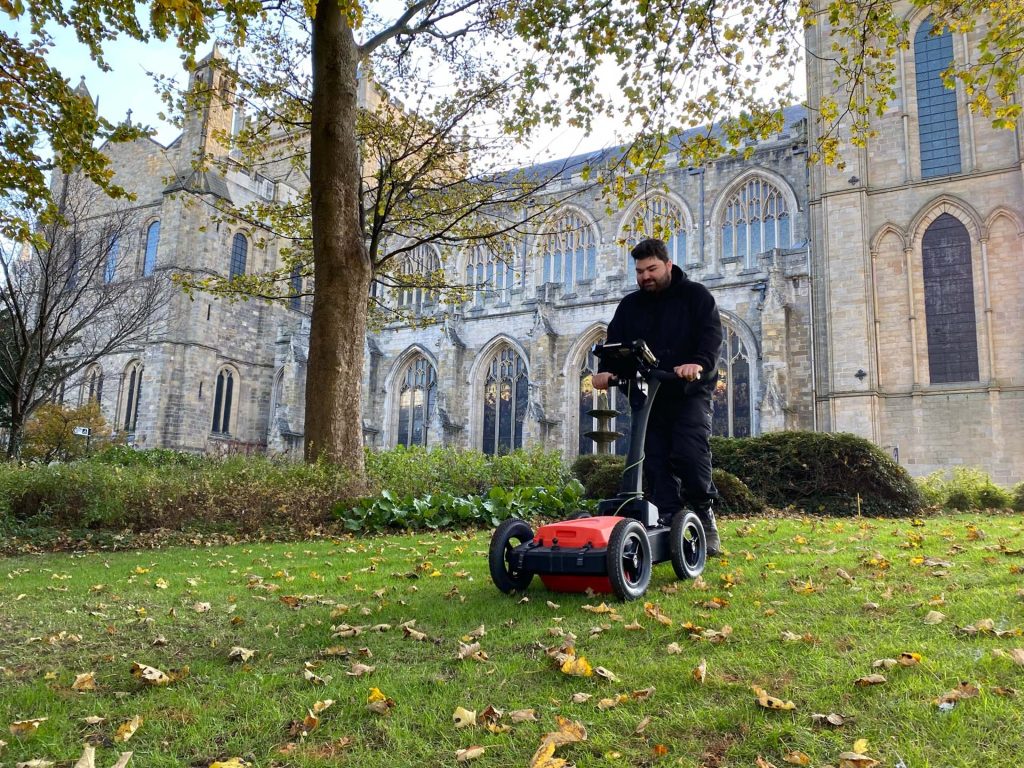Ground-penetrating radar (GPR) measures the travel time of reflected high-frequency electromagnetic radiation. Effective for detecting abrupt interfaces between materials and fills. Typical example targets include foundation remains, graves, chambers and voids.
Magnitude Surveys can deploy hand-held or motorised, single-channel, multi-channel, multi-frequency or stepped-frequency systems according to the required survey target, depth, resolution and coverage.
